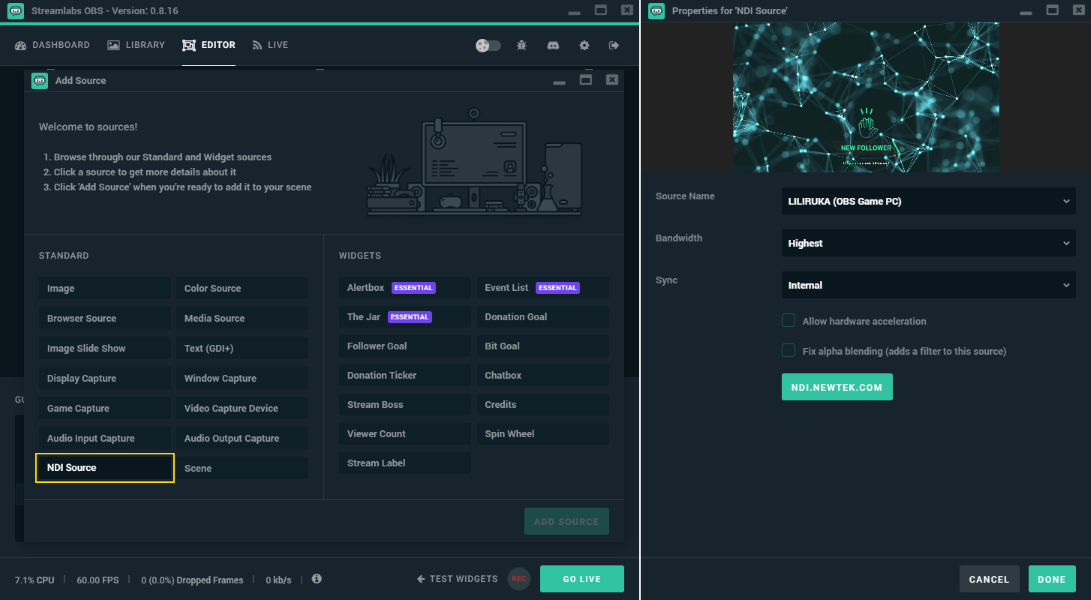Streamlabs Desktop is only able to receive an external NDI stream as a source. So you need another application that is capable of capturing and sending out an NDI stream on your local network. You will first need to setup your output in order to setup your reception. For output, see our articles on sending NDI in OBS Studio or Create NDI stream with Scan Converter 2, vMix, or Mobile Device.
1. Install NewTek NDI SDK
To get started with NDI streams and sources you'll need to have the NewTek NDI SDK redist installed on the computer on which you want to use Streamlabs Desktop to receive an NDI stream or on the computer you are using an application to create and send an NDI stream. After installing the SDK, be sure to reboot your computer.
If you are encountering issues receiving an NDI stream with Streamlabs Desktop make sure that the application generating the NDI stream is allowed through the firewall and that Streamlabs Desktop receiving the NDI stream is also allowed through the firewall and that both connecting computers are on the private network profile.
See this article how to open the firewall for various applications.
2. Setup to Receive NDI stream with Streamlabs Desktop
Once your local network contains one or more NDI streams you can add them as a source in Streamlabs Desktop. Simply click the + icon above the sources to add a new source and select NDI Source. In the properties of the NDI source, select which NDI stream you want to receive and display. Active NDI streams on your local network are automatically detected.

If you do not see NDI Source listed as an available source you have either not installed the NewTek NDI SDK correctly or have rebooted the computer after installing the SDK.